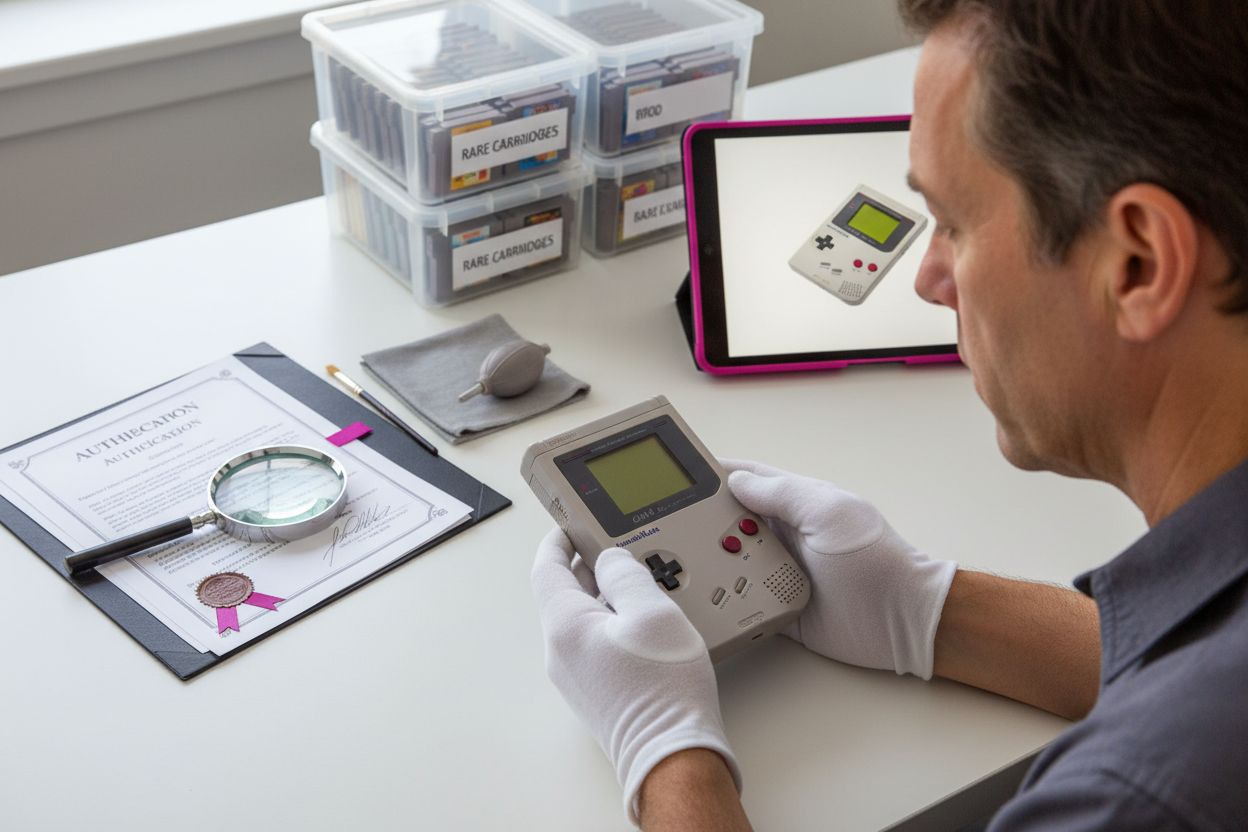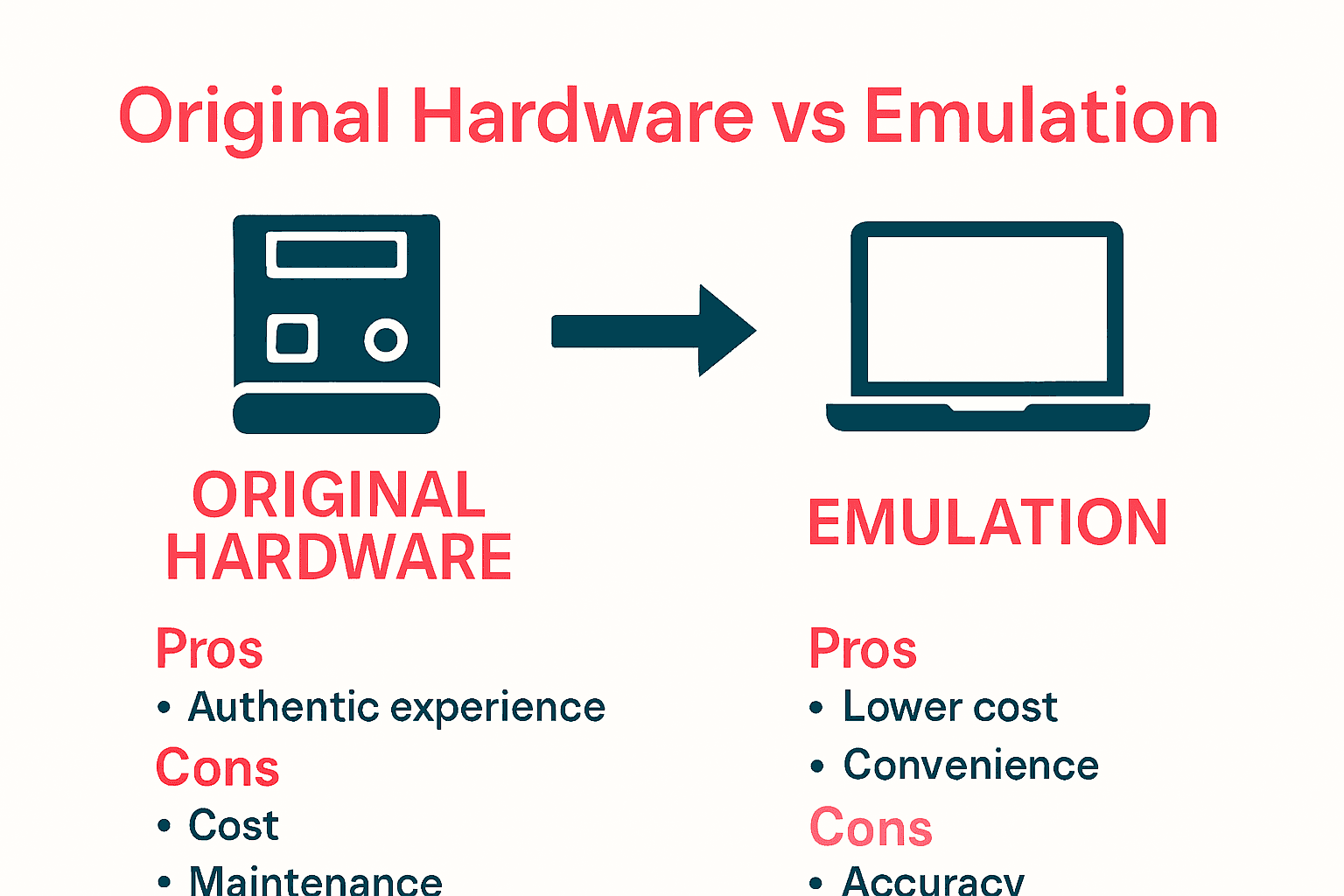
Retro Technology Explained: Complete Collector’s Guide
Share
Did you know that global interest in retro technology has surged by more than 300 percent in the past decade? People are not just reminiscing about the past, they are actively restoring and enjoying gadgets from earlier generations. Retro tech brings enthusiasts together, blending nostalgia with a hands-on approach to preserving digital history. Each vintage device becomes a window into past innovations, offering lessons and experiences that modern technology often overlooks.
Key Takeaways
| Point | Details |
|---|---|
| Cultural Significance | Retro technology is a celebration of past engineering and design, serving as a connection to our technological heritage. |
| Key Motivations | Enthusiasts are driven by nostalgia, technical curiosity, and a desire to preserve computing and gaming history. |
| Operational Methods | Vintage gadgets can be experienced through original hardware or emulation, allowing preservation of legacy systems. |
| Collecting Challenges | Collectors must navigate risks such as hardware degradation and counterfeit products while maintaining their collections. |
Table of Contents
- What Retro Technology Means Today
- Key Types Of Retro Tech Products
- How Vintage Gadgets And Devices Operate
- Collecting, Using, And Maintaining Retro Tech
- Top Risks, Buying Tips, And Common Pitfalls
What Retro Technology Means Today
Retro technology represents far more than dusty old gadgets collecting cobwebs. According to research from Wikipedia on retrocomputing, this passionate movement celebrates preserving and experiencing technological artifacts from previous decades. Retrocomputing isn’t just about nostalgia - it’s a deliberate effort to maintain digital heritage and understand technological evolution.
For collectors and enthusiasts, retro tech encompasses multiple dimensions. Understanding the trends behind retro style reveals it’s about connecting with technological history through tangible experiences. In retro gaming, for instance, hobbyists don’t just collect vintage consoles - they preserve interactive cultural artifacts. As Wikipedia notes, this involves playing older video games and computers from earlier decades, driven by desires for authenticity and historical preservation.
Modern retro technology appreciation involves several key motivations:
- Nostalgia for design aesthetics
- Technical curiosity about older systems
- Preservation of computing and gaming history
- Appreciation for mechanical and analog technologies
- Celebrating engineering achievements of past generations
Today’s retro tech community represents a vibrant intersection of historical appreciation, technological fascination, and cultural memory. It transforms old gadgets from obsolete relics into cherished connections with our technological past.
Key Types of Retro Tech Products
Retro technology encompasses a fascinating range of products that capture the essence of technological nostalgia. Understanding what makes a gadget retro reveals a diverse landscape of collectible items that bridge past and present. Gaming Consoles represent one of the most popular categories, with vintage systems like Atari, Nintendo, and Sega attracting passionate collectors who seek to preserve interactive digital history.
Beyond gaming, retro tech products span multiple exciting categories. According to OnlyRetro’s product range, these include:
Here’s a summary of popular retro tech product categories and their main appeal:
| Category | Example Products | Main Appeal |
|---|---|---|
| Gaming Consoles | Atari 2600 Nintendo NES Sega Mega Drive |
Vintage gaming experience |
| Handheld Gaming Devices | Anbernic RG406V Game Boy Color |
Portability Classic games |
| Audio Equipment | Vinyl record players Bluetooth speakers |
Retro sound Design aesthetics |
| Computing Devices | Reimagined Commodore 64 Classic PCs |
Digital nostalgia Heritage |
| Phone Accessories | Retro-themed cases Decorative covers |
Modern utility Vintage look |
| Communication Gadgets | Retro mobile phones Pagers |
Nostalgia Unique conversation |
- Handheld Gaming Devices: Compact retro-styled consoles like the Anbernic RG406V
- Phone Accessories: Nostalgic-themed protective cases and covers
- Audio Equipment: Vintage-inspired record players and bluetooth speakers
- Computing Devices: Reimagined classic computer designs
- Communication Gadgets: Retro-styled mobile phones and communication tools
Collectors are drawn to these products not just for their functionality, but for their ability to evoke memories and celebrate technological design evolution.
 Exploring vintage gadgets reveals a rich tapestry of design, engineering, and cultural significance. Each item tells a story of technological innovation, representing more than just an object - it’s a tangible connection to our technological heritage.
Exploring vintage gadgets reveals a rich tapestry of design, engineering, and cultural significance. Each item tells a story of technological innovation, representing more than just an object - it’s a tangible connection to our technological heritage.
The modern retro tech market thrives on this emotional connection, transforming old technological concepts into contemporary collectibles that resonate with enthusiasts who appreciate design, history, and the enduring charm of vintage technology.
How Vintage Gadgets and Devices Operate
Vintage gadgets operate through fascinating technological mechanisms that bridge historical engineering with modern preservation techniques. According to Wikipedia’s research on retrocomputing, these devices can function through two primary approaches: direct original hardware usage or sophisticated emulation technologies that simulate vintage system capabilities.
Emulation represents a critical method for experiencing vintage technology. As research reveals, modern hardware can recreate the exact operational environment of older systems, allowing enthusiasts to run legacy software and access obsolete media formats. A prime example of this technological adaptation is the Famiclone, a hardware clone of the classic Nintendo Entertainment System (NES). These devices use single-chip ASIC designs to replicate original functionality, often including built-in games that capture the essence of vintage gaming experiences.
Vintage device operation typically involves several key strategies:

- Original hardware preservation
- Digital emulation on modern systems
- Hardware cloning with updated components
- Specialized restoration techniques
- Reverse engineering of classic circuit designs
How to display and maintain these collectible devices becomes crucial for collectors seeking to preserve technological heritage. The magic of vintage gadgets lies not just in their original functionality, but in their ability to tell a story of technological evolution, demonstrating how innovation transforms over decades.
Collecting, Using, and Maintaining Retro Tech
Collecting retro technology is a delicate art that balances passion with preservation. How to start collecting retro tech requires understanding the nuanced world of vintage gadgets. According to Wikipedia’s research on retrocomputing, collectors are driven by a deep commitment to preserving technological heritage, often resurrecting obsolete hardware to access legacy data and maintain historical significance.
Maintaining vintage devices involves several critical strategies to prevent hardware degradation:
- Controlled storage environments
- Minimal handling of delicate components
- Regular gentle cleaning
- Periodic operational checks
- Protective cases and humidity control
The collector’s journey involves more than just acquisition. Preservation techniques require careful consideration of each device’s unique technological ecosystem. Some collectors focus on functional restoration, while others prioritize maintaining original condition. Understanding the risks of hardware deterioration becomes crucial in this meticulous process.
Beyond technical maintenance, retro tech collecting is about storytelling. Each device represents a moment in technological evolution, connecting enthusiasts with the innovative spirit of previous generations. By carefully documenting, preserving, and occasionally using these technological artifacts, collectors ensure that the rich narrative of human technological progress continues to be told.
Top Risks, Buying Tips, and Common Pitfalls
Navigating the world of retro tech collecting requires strategic insight and careful consideration. How to avoid counterfeit products becomes crucial in protecting your investment and ensuring authenticity. According to Wikipedia’s research on retrocomputing, collectors face significant challenges, particularly with hardware obsolescence and the complex landscape of vintage technology acquisition.
Key risks for retro tech enthusiasts include:
- Hardware Degradation: Components deteriorate over time
- Counterfeit Products: Fake vintage items flooding the market
- Compatibility Issues: Modern systems may not support older technologies
- High Restoration Costs: Repairing vintage devices can be expensive
- Limited Replacement Parts: Scarcity of original components
Buying Tips to mitigate these risks involve thorough research and strategic purchasing. Collectors should prioritize purchasing from reputable sources, verify device authenticity through detailed inspection, and understand the device’s historical context. While emulators and hardware clones can provide alternatives, they often sacrifice the unique authenticity of original vintage technology.
Ultimately, successful retro tech collecting demands patience, knowledge, and a genuine passion for technological history. By approaching acquisitions with careful deliberation and understanding potential challenges, enthusiasts can build meaningful collections that preserve and celebrate the innovative spirit of past technological eras.
Experience the Joy of Authentic Retro Tech Collecting
Are you passionate about protecting digital heritage and seeking genuine vintage-inspired gadgets? This article has explored the excitement and challenges of collecting retro technology, highlighting how easy it is to face difficulties like hardware deterioration, counterfeit risks, and the struggle to find true collector-worthy items. Whether you want to relive classic gaming moments, preserve iconic designs, or build a valuable collection, you deserve access to expertly curated and authentic retro products.
It is time to stay ahead of collectors’ challenges. Visit OnlyRetro’s homepage for a hand-picked range of nostalgic tech gadgets that blend classic aesthetics with today’s reliability. Make your next addition truly special—discover your next must-have item at OnlyRetro and embrace the future of retro collecting today.
Frequently Asked Questions
What is retro technology?
Retro technology refers to the preservation and appreciation of technological artifacts from previous decades, celebrating their historical, cultural, and aesthetic significance.
How do vintage gadgets operate?
Vintage gadgets can operate through original hardware usage or emulation technologies that replicate the capabilities of older systems, allowing enthusiasts to run legacy software and access obsolete media formats.
What are some key types of retro tech products?
Popular retro tech products include gaming consoles like Atari and Nintendo, handheld gaming devices, vintage audio equipment, classic computing devices, and retro-themed phone accessories, each evoking nostalgia and cultural significance.
What are the main risks associated with collecting retro technology?
Main risks include hardware degradation, counterfeit products, compatibility issues with modern systems, high restoration costs, and limited availability of replacement parts, making careful research and preservation strategies essential for collectors.